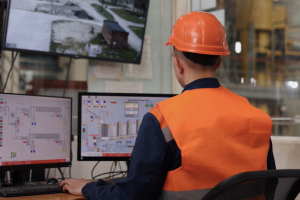
- Cover via Amazon
I recently finished reading the book
Plan B 4.0: Mobilizing to Save Civilization by
Lester Brown. This book has lots of ideas and generates more; it has been a challenge to pare them down to what you see here. This can be a difficult read due to the style of writing. Brown delivers multiple factoids on a theme and then tries to extrapolate a conclusion from the group. Sometimes with productive results, sometimes not. This read also requires an open mind to obtain the useful bits of information, so a couple of warnings:
First, he uses the concept of climate change prominently, both as a cause for some of his observations and as reasoning for many of his suggested actions and timelines. I bring this up not to discuss the validity of the theory in this forum, but as something to be aware of as a major component of the book.
Second, with all of the statistics and case studies he presents from all over the world it can be a little difficult to maintain perspective and keep in focus how different locations have different problems and call for different solutions. Both perspectives are important because with environmental issues the challenge is to think globally and act locally.
Overall, he has a decent collection of bits of information. For a quick primer of worldwide environmental concerns, this is a decent place to start. Where I think he misses the mark--and also where the engineering profession could be stepping in--is his plan. He starts with a problem, for example: our dependence on coal and oil for the production of electricity. He then identifies a solution, in this case he is a champion of wind turbines. Finally, he jumps to the end, by proposing that by focusing enough capital and resources wind turbines can become the main source of energy in the clean and efficient future. There is little discussion of the potential technological problems or any difficulty there would be convincing the nation that such an investment is a good idea.
I would like to highlight a few good ideas that with minimal input (where engineers could play a pivotal role) would have significant impacts on their environments and a conversation starter.
Good Concept #1 - Energy demand reduction.
The next major steps in developed countries to reducing energy and resource consumption are centralization (higher density urban living) and moving down the food chain (eating less energy-intensive foods such as meat). Significant efficiencies of scale can be realized through high density living. People travel less for work and errands, transportation becomes more efficient, energy demands are lower (smaller more efficient living and working spaces), and resource distribution is more efficient. This will require new infrastructure, new transportation systems, and new equipment, but it is all within our current capabilities. There are behavioral questions that must be acknowledged, such as
'Do people want to live that close together?'.
Good Concept #2: Smarter water.
In many locations clean water is a limiting factor, whether it is for agriculture, industry, or just regular living. With the exception of areas of extreme scarcity and some good corporate examples there is not a culture of conservation in the U.S.
There are many small, easy changes that can be made that would drastically reduce water usage. Even more savings can be realized through better design and engineering of products, appliances, and processes. Through out the world, with the help of engineers, demand can be decreased and clean water can be brought to communities with limited resources and difficult geographies, greatly improving the quality of life.
Good Concept #3: Off-Grid Energy Production
There are many places where power lines do not run. In many of these places there is significant time and effort spent on getting traditional energy sources (wood, coal, oil) to that location, and there still might not be electricity. Through solar panels, turbines, or other location specific solution electricity can be produced much easier than building infrastructure out to remote locations. This can be as complex as powering remote research stations with solar panels. It can also be as simple as providing lighting and computers for improved schooling in remote villages. Portable solar cookers can replace firewood hauled from great distances (or rapidly shrinking forestland) for cooking and making water safe to drink. A coordinated off-grid strategy can reduce resource depletion in sensitive areas, save lives, and eliminate some of the most inefficient resource consumption (such as small internal combustion engines, burning wood, or charcoal). In these off-grid locations implementation of solar panels, wind turbines, or other similar energy source there is the largest potential for return on investment and room for improvement.
There are also many topics in the book that are great conversation (hopefully not argument) starters. They aren't directly engineering related, but interesting to discuss.
Here is one topic from the book I will share: Taxation Shift
The concept is to try to show the total cost and emissions of a product from production, consumption, through disposal--cradle to grave pricing. For example batteries or electronicsmay have higher costs due to the energy intensity of refining the metals or the difficultly of disposing of them. Anything disposable might have a higher price because it is made with the intention of ending up in a landfill. While a product made of recycled materials and constructed for durability and ease of disassembly and recycling may cost less.
This would encourage manufacturers and consumers to move toward a cradle to cradle mindset where products come from sustainable resources and can be useful after their original intent has been fulfilled. The implementation of this pricing would coincide with a reduction of income taxes, the intention being to not create an additional tax but a more accurate assessment of costs of each product to society. There are some obvious obstacles that would need to be overcome such as who will determine these costs and how will different variables be weighted, to name a few. But how would a system like this stand up against the current proposals for systems like 'Cap and Trade'? More or less fair and accurate?
A free pdf version of this book can be downloaded from
Earth-Policy.org
Or download the
Plan B 4.0 Fact Sheet.






